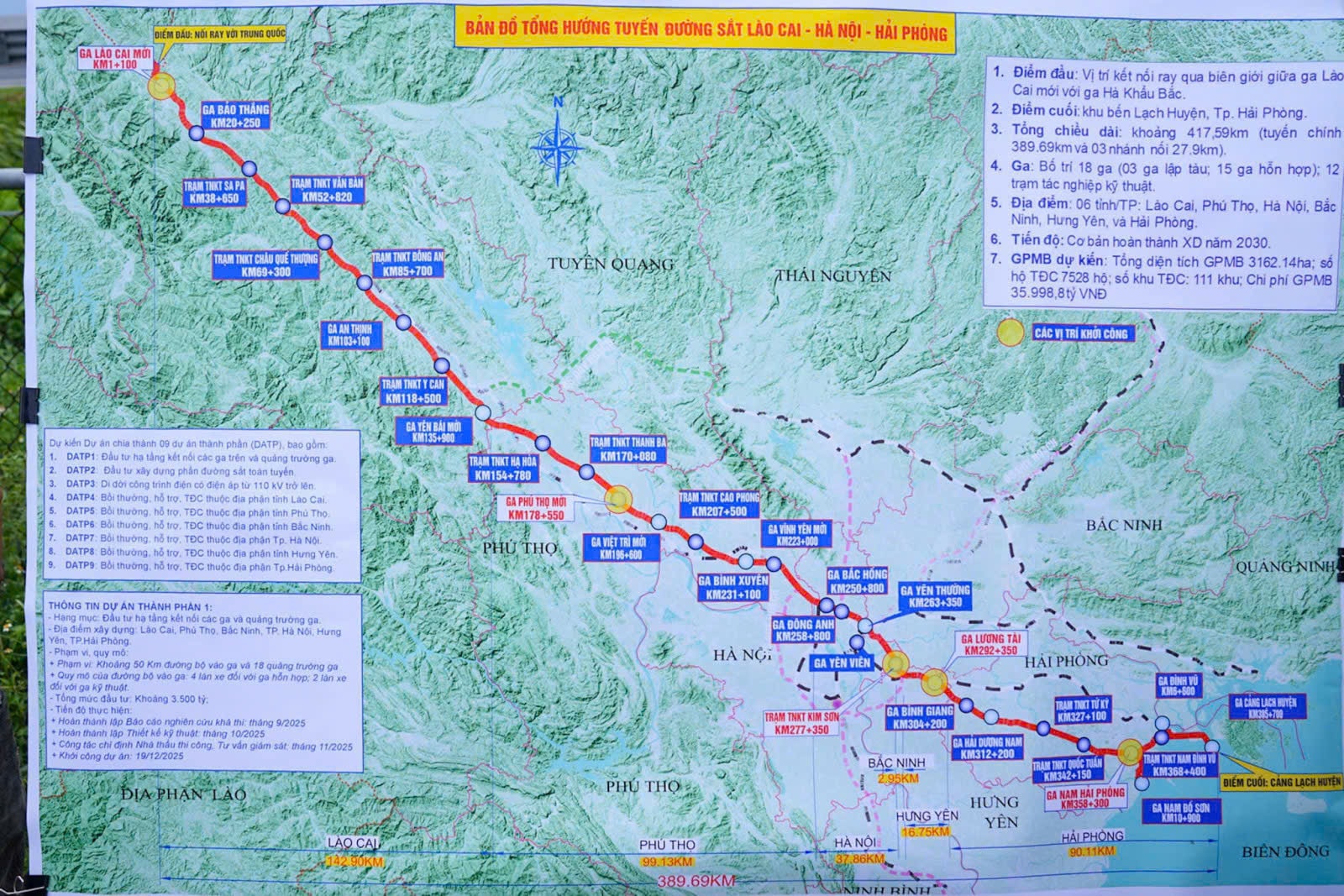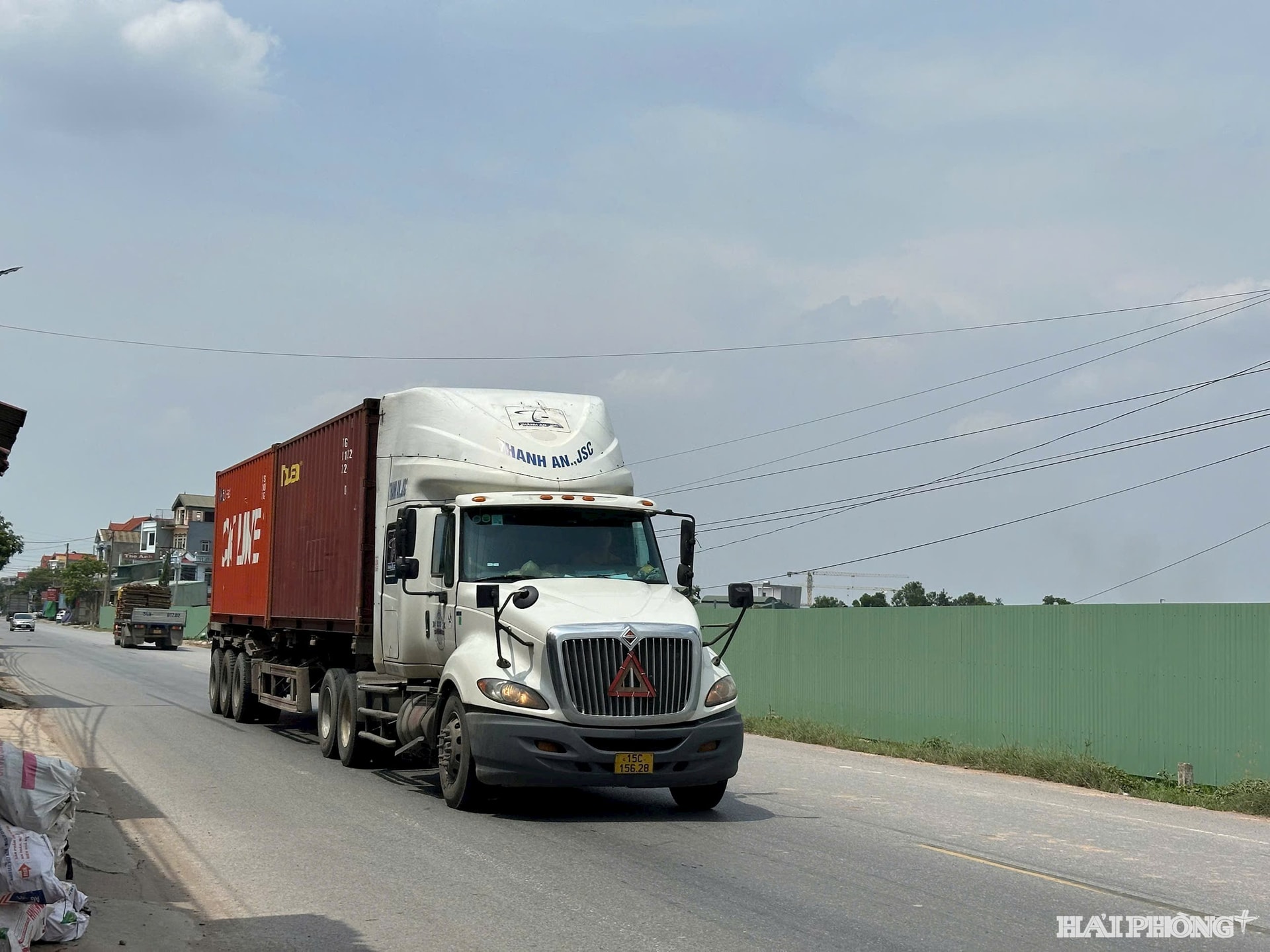Lao Cai – Ha Noi – Hai Phong railway: A strategic link welcoming future growth
Hai Phong city is actively coordinating and proposing solutions to ensure effective connection of Lao Cai – Ha Noi – Hai Phong railway with seaports, airports, and industrial parks.
.jpg)
Seamless connection between seaports, airports, and industrial parks
Lao Cai – Ha Noi – Hai Phong railway is expected to become a new backbone of Northern transport. Spanning approximately 419 km, this route will significantly shorten the journey from border gates to seaports, easing pressure on road transport.
The project aims to build a modern and synchronized railway system to meet domestic and international freight transport demands between Vietnam and China; serve as a driving force for rapid and sustainable socio-economic development; and leverage the advantages of Lao Cai – Ha Noi – Hai Phong economic corridor.
The railway is also intended to ensure effective connection of domestic and international railway networks in association with national defense, security, international integration, environmental protection, and climate change response, etc.
The Hai Phong section of the railway will stretch nearly 90 km, passing through 24 communes, wards, and special zones.
Currently, the city is carrying out its assigned tasks with urgency and determination to ensure that the project can begin construction as scheduled in December 2025.

Hai Phong is not only the final stop on the national railway line but also a major international cargo transshipment hub thanks to its deep-water seaport system and the modern Cat Bi international airport.
To ensure the efficiency of investment and maximize the role of regional connectivity through Lao Cai – Ha Noi – Hai Phong railway, the city is closely working with ministries and Central bodies on project implementation, while also proposing adjustments to the planning for key stations and technical infrastructure for connection.
In particular, Hai Phong proposed that the Ministry of Construction and the Railway Project Management Board study and add approach roads and grade-separated interchanges at both ends of Tan Vu – Lach Huyen 2 bridge to serve the need for rail–sea cargo transfer at Lach Huyen deep-water port, Northern Vietnam’s largest import-export gateway.
The city also suggested studying options to connect the railway with Trang Cat urban area and the building a tunnel through Tan Vu – Lach Huyen road to link with Ho Dong area, where a themed park is planned, and with access routes to Cat Bi airport.
Plans to connect Binh Giang and Hai Duong Nam stations, as well as infrastructure integration with surrounding industrial parks such as Phuc Dien (expanded), Hung Dao, and Yet Kieu, have been agreed upon by local authorities, project investors, and consulting units.
Station upgrade proposals

Hai Phong city has also proposed that the Ministry of Construction and the Railway Project Management Board evaluate and determine the appropriate size and functions of stations along the route.
There is another proposal to expand Nam Dinh Vu Operations Station into Nam Dinh Vu Station (covering about 10 ha), adding passenger functions and designing it as an elevated station with access routes linking to Trang Cat urban area.
This would include a tunnel to Ho Dong, where a themed park is envisioned. If realized, this would provide Hai Phong with a modern urban station model akin to those in Japan or South Korea, where each arriving train brings not only passengers, but also opportunities for investment, trade, and tourism.
For Dinh Vu Station, the city proposed expanding its scale to include entry and exit roads, parking areas, and zones for container and cargo collection to better accommodate the high traffic volume along Dinh Vu trunk-road, which serves the city’s freight ports.
The city also suggested adding a shared peripheral road around Dinh Vu station to connect directly with Dinh Vu road, ensuring smooth local traffic flow.
NGA TRANG
